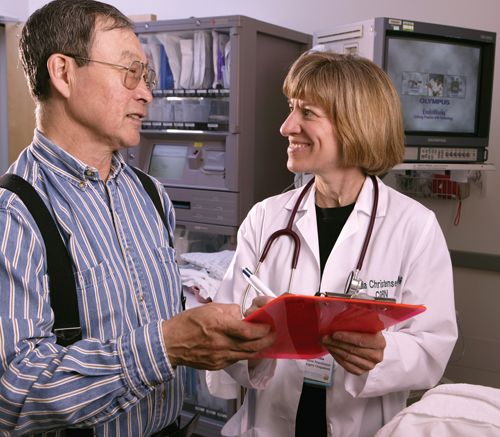
Photo is courtesy of the Alaska Native Tribal Health Consortium.
syəcəb

The Associated Press April 3, 2014
By LAURAN NEERGAARD and MARY CLARE JALONICK
WASHINGTON — The government is taking a step to let friends or loved ones treat someone they suspect has overdosed on heroin or powerful painkillers called opioids, while they’re waiting for medical care.
The Food and Drug Administration on Thursday approved an overdose antidote that doctors could prescribe for family members or caregivers to keep on hand, in a pocket or a medicine cabinet. Called Evzio, it’s a device that automatically injects the right dose of the drug naloxone, a long-used antidote for opioid overdoses.
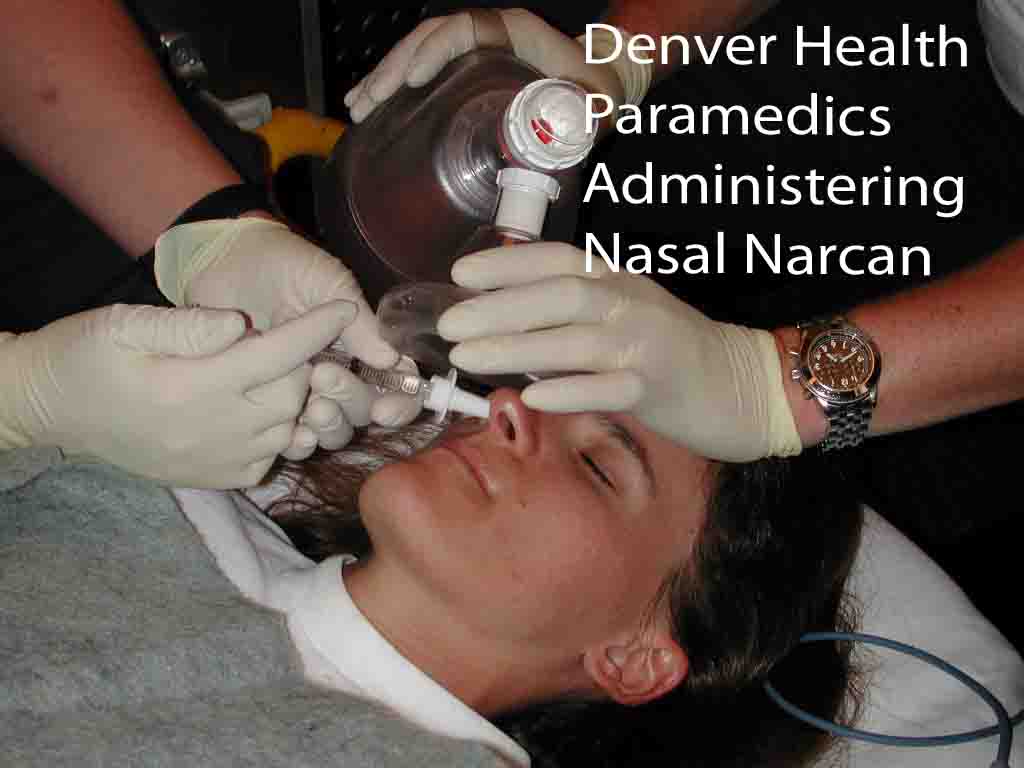 Naloxone is usually administered by syringe in ambulances or emergency rooms. But with the rise in drug overdose deaths, there has been a growing push to equip more people with the protection.
Naloxone is usually administered by syringe in ambulances or emergency rooms. But with the rise in drug overdose deaths, there has been a growing push to equip more people with the protection.
The FDA said Evzio’s design makes it easy for anyone to administer. Once Evzio is turned on, it provides verbal instructions, much like defibrillators that laymen frequently use to help people who collapse with cardiac arrest.
The antidote is not a substitute for immediate medical care, the FDA said, as anyone who has overdosed will need additional treatment.
FDA Commissioner Margaret Hamburg said in a statement that 16,000 people die every year due to opioid-related overdoses, and that drug overdose deaths are now the leading cause of injury death in the United States, surpassing motor vehicle crashes. She said the increase in overdose deaths has largely been driven by prescription drug overdoses.
“While the larger goal is to reduce the need for products like these by preventing opioid addiction and abuse, they are extremely important innovations that will help to save lives,” Hamburg said.
Follow Mary Clare Jalonick on Twitter: http://twitter.com/mcjalonick
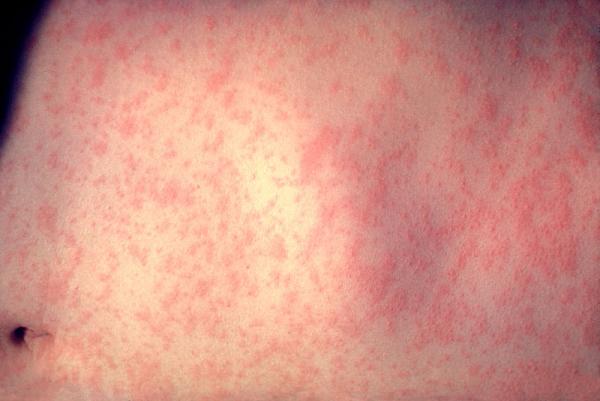
By Tom Banse, NW News Network
A big measles outbreak in British Columbia has crossed over the border into the American Northwest.
Health officers in B.C.’s Fraser Valley have confirmed over 350 cases of measles there since an outbreak started in early March. Six additional cases have now been diagnosed in Whatcom County, Wash., including a woman in her 20s who has prompted a regionwide alert.
While contagious, she mingled with crowds at a rock concert at Seattle’s Key Arena. She also visited Puget Sound tourist attractions such as the Pike Place Market, LeMay Car Museum and Harmon Brewing Company in Tacoma.
Whatcom County Health Officer Greg Stern says this measles outbreak traces back to a religious community in British Columbia’s “Bible Belt.”
“To the extent that people avoid vaccines, they increase both their risk and the risk of the community so that it can take hold. I’m worried about that.”
Measles is easily prevented with a vaccine. The symptoms resemble a really bad cold followed by a rash. It can result in serious complications.
Already this year, seven cases of measles have been reported to the Washington State Department of Health. That compares to just five over the entire course of last year.
In recent years, the Washington and Oregon legislatures have made it harder to get vaccination exemptions for school-age children.
By SUSAN SHANNON
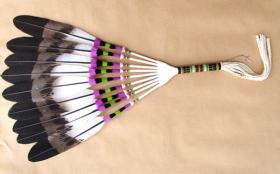
A two day conference allows a newly created organization to demonstrate its work and research on various health-related issues facing Native Americans in the United States. The sixth annual Tribal Epidemiology Center Public Health Conference’s theme isWhere We Have Been, Where We Are, And Where We Are Going.
Where We Have Been
In the mid 1990’s, Native American tribes saw the need to write their own health stories and maintain their own data banks on health statistics. Funding from the Indian Health Service helped to create the first two epidemiology pilot centers, or EPI Centers.
In 2004, the Oklahoma City area received similar funding to create what is one of twelve centers currently serving the United States’ indigenous population.
Where We Are Now
Tyler Snyder is the epidemiologist at the Tribal Epidemiology Center in Oklahoma City. Snyder says this center is not just about a traditional view of epidemiology.
“What we do here, instead of doing just disease outbreak and surveillance, we provide EPI services in the form of helping people develop surveys, implement the surveys, doing analysis and we also provide training, like tobacco cessation training, intervention training, and training on a number of other health issues,” said Snyder.
“We also provide some community health profiling,” Snyder said. “We look at data from the national level, state level and also some locally collected data and put those together to form a picture for a tribe so we can say ‘here’s what your tribe’s health looks like right now.’
Dr. Tom Anderson (Cherokee), is the director of the so-called EPI Center in Oklahoma City. Anderson said part of the Affordable Care Act reauthorizes the Indian Health Care Improvement Act, and sets some specific goals.
“Tribal epidemiology centers are to be considered as public health authorities for the area tribes,” Anderson said. “The EPI centers were to carry out seven specific functions including disease surveillance, data collections, evaluation of delivery systems, assist tribes in identifying highest priority health status, recommendations for targeting services, and so on.”
Where We Are Going
Patricia Yarholar (Sac and Fox) is the public health coordinator at The Tribal Epidemiology Center. Yarholar sees the conference as a way to implement some of those directives. The two day conference will hold several behavioral workshops and suicide prevention workshops imbued with native sensibilities.
“We also have the health policy track, we’re going to be having a workshop on incorporating taking culture into policy. Making tribal health programs and employees work with American Indians so it will be culturally appropriate information,” Yarholar said.
“A workshop on accreditation for public health as well as another one on the tribal public health institute is very new and I think a lot of people will be very interested in what this workshop has to share with us,” Yarholar said.
“What it does is reach out to tribes and provides market analysis, organizational and financial analysis in working with Native American tribes,” Yarholar said. “An assessment to determine needs and the potential role that the tribal health public institute has in order to go along the line of organizational structure, and operating costs can be done.”
The AARP will be holding a round table on transportation.
“This relates to a lot of the health disparities people experience because they don’t have transportation to go to appointments or maybe to go to different areas to pick up medication or to pick up proper foods,” Yarholar said.
Other workshops will go over the Affordable Health Care Act, the Health Insurance Marketplace, diabetes in Cherokee children and diabetes in the Kickapoo tribe.
Keynote speakers include Michael Bird(Santa Domingo/San Juan Pueblo), the first Native American to serve as president of the American Public Health Association, and Dr. Jessica Rickerts(Prairie Band Potawatomi), the first female Native American dentist. Rickerts will present a workshop on the dental health of American Indian/Alaska Native Veterans
The 6th Annual Tribal Epidemiology Center Public Health Conference takes place April 29 & 30 in the Fire Lake Grand Casino in Shawnee and is free and open to the public.
![]()
By Sarah Moses | smoses@syracuse.com
on March 27, 2014 at 11:00 AM, updated March 27, 2014 at 11:02 AM

Nedrow, NY — A bone marrow drive will be held Saturday in Nedrow in an effort to find a match for a 14-year-old Northern New York girl who is fighting for her life as she waits for a bone marrow transplant.
Alyson Stiles is battling acute lymphocytic leukemia and finding a bone marrow match has been difficult because Stiles is part Native American.
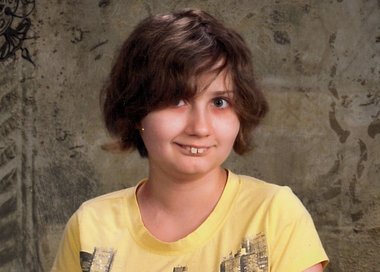
Stiles’ best chance for finding a match would come from a person with Native American ancestry, said Paula Miller, of the William G. Pomeroy Foundation, who organizes local bone marrow drives.
It is very difficult for Native Americans to find matches because there are so few Native Americans donors registered. Miller said there are 10 million registered donors, but only one percent are Native American.
In 2010, a bone marrow drive was held on the Onondaga Nation to find a match for a Cazenovia teen who is part Native American. More than 50 Native Americansjoined the registry during the drive. Miller said those potential donors will remain on the registry until they are 61 years old, but more donors are needed.
The bone marrow drive will be held from 9 a.m. to 1 p.m. at the Nedrow Fire Department, which is located at 6505 S. Salina St., in Nedrow. The bone marrow drive is in honor of Stiles, but potential donors of all racial backgrounds are needed to join the registry, Miller said. Thousands of patients on the Be the Match Registry are searching for a match.
Potential donors must also be willing to donate to any patient in need, not just Stiles, Miller said.
Stiles and her family are staying at the Ronald McDonald House in Syracuse as she receives treatment at Upstate Golisano Children’s Hospital. Stiles was diagnosed with leukemia when she was a toddler. The cancer returned when Stiles was 11 and again recently. Stiles has been sick most of her life.
To be a donor, volunteers must be between 18 and 44 years old and have no history of heart disease, cancer, diabetes or HIV. The collection kit is performed by swabbing the inside of the cheek.
“It’s not painful,” Miller said. “We don’t draw blood. It’s just a quick swab to the inside of your cheek.”
To learn more about the donation process, visit the Be The Match website. For more information about the bone marrow drive in Nedrow, call Paula Miller at 476-3000, ext. 2576.
The bone marrow drive is sponsored by the William G. Pomeroy Foundation and in collaboration with the Nedrow Fire Department, Onondaga Nation Fire Department and Ronald McDonald House Charities of Central New York.
Sarah Moses covers the northern suburbs of Onondaga County and Oswego County. Contact Sarah at smoses@syracuse.com or 470-2298. Follow@SarahMoses315
By John LaCrosse Published: Mar 27, 2014 at 9:40 PM PDT Last Updated: Mar 28, 2014 at 1:21 PM PDT
Watch the newscast here
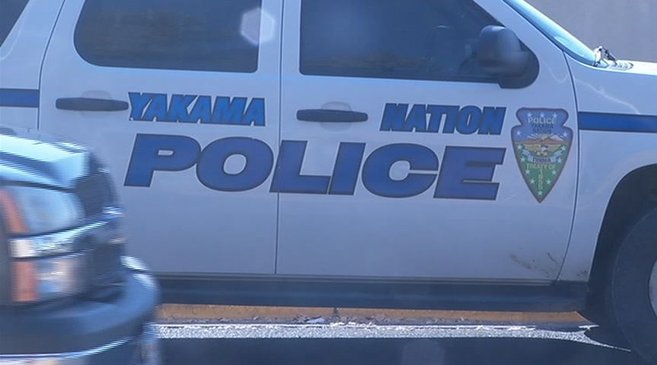
YAKIMA COUNTY, Wash. — The state patrol’s goal of eliminating traffic fatalities will take the whole community working together to accomplish. A coalition with a school district on the Yakama Nation Reservation is proving that point. The number of Native Americans involved in DUI fatalities has dropped nearly 40 percent in recent years.
Brandon Smith considers himself lucky to have survived a DUI accident.
Luckily, no one was killed. But, Brandon was left with a broken skull.
“I honestly thought I was going to die, because I’ve never been in a car accident previous to that,” said Smith.
Not everyone in DUI crashes is as lucky as Brandon. Native Americans have traditionally seen many DUI fatalities. Nancy Fiander works for Mt. Adams School District; she’s part of a coalition to put a stop to them.
“I’m a lifelong resident, and, growing up and reading the papers, there were times you didn’t want to read the paper because you worried about who you were going to find that you had lost,” said Fiander.
Through several different federal grants, she’s working to turn this trend around. The coalition pinpointed community events that lead to high numbers of DUIs. Emphasis patrols were assigned to these events. They’re made up of Yakama Nation police, WSP, and Yakima County sheriff’s deputies working together. Creating community awareness and stricter enforcement of family and school rules are also paying off.
KIMA pulled the numbers and found the efforts seem to be working.
Just four years ago, Native Americans made up nearly half of all DUI fatalities in our county. That number dropped to only 10 percent last year, with only two out of 19.
“We’re just tired of losing our kids and our family members and our relatives, and so we just want to see if we can do something about that,” said Fiander. “We’re tired of burying our kids.”
It’s education and awareness that saves one life at a time.
This is the fourth year of a five-year federal grant of $125,000. The next emphasis patrol will be this weekend after a men’s basketball tournament in Wapato.
Nancy Fiander will receive a Target Zero award for her efforts next month.
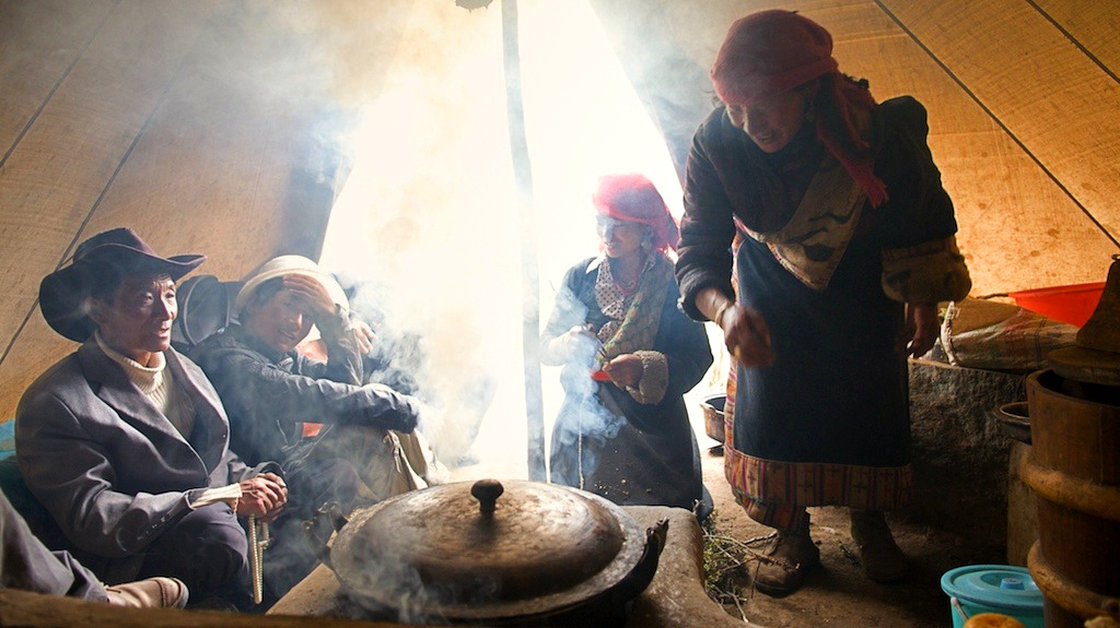
By Linda Poon, NPR
Air pollution has become the world’s largest environmental risk, killing an estimated 7 million people in 2012, the World Health Organization says.
That means about 1 out of every 8 deaths in the world each year is due to air pollution. And half of those deaths are caused by household stoves, according to the WHO published Tuesday.
The fumes from stoves that burn coal, wood, dung and leftover crop residues as primary cooking fuels contribute to heart disease, stroke, lung cancer and respiratory infections.
“What people have had available to them are primarily wood, dung and crop residues,” says , an environmental health researcher specializing in air pollution at Harvard University who wasn’t involved in the study. “These three fuels are the most polluting fuels on earth per unit of energy extracted.
“They don’t have a lot of energy, so you have to burn a lot of fuel, and that causes a lot of pollution in the process,” Powers told Shots.
People in low- and middle-income countries in Southeast Asia and the Western Pacific are most affected, with 3.3 million deaths caused by indoor air pollution annually.
But it’s not an easy problem to fix, despite new technologies like solar, gas and electric stoves that are more efficient and healthier than the biomass stoves many are using today.
“No matter how much you improve biomass stoves … you can have some health benefits but you can’t meet health targets,” she tells Shots.
The challenges, she says, lie in distributing less-polluting stoves to people in rural areas, and getting people to want them. Many of these people sit around the stove to keep warm or use the stove to heat their beds, so more efficient stoves may not be accepted if it forces them to change those habits.
“Even if they are given the stove for free, they end up not using it,” Powers says.
The bigger issue at hand is to get cleaner fuels to people, she adds, which will address not only the health hazards but also the environmental problems.
But because of population growth and increasing cost, the shift to cleaner and more efficient use of energy hasn’t made much progress. In fact, the shift has slowed and even reversed, to the International Energy Agency.
March 20th is National Native American AIDS Awareness Day. AIDS and HIV, though declining nationally, are on the rise in many Native American communities, according to the Center for Disease Control and Prevention. For Tulalip, HIV and AIDS have been steadily climbing, following that trend.
National Native American AIDS Awareness Day is intended to raise awareness about the unique challenges native American communities face that lead to increased risk. While race and ethnicity neither play no part in susceptibility nor create a predisposition to risk of infection, the demographic challenges many Native Americans face to lead to increased risk factors. These include cultural diversity, socioeconomic challenges, substance abuse, societal stigmas, mistrust of government health care, and lack of awareness because of cultural barriers.
National Native American AIDS Awareness day was first observed in 2007, and has been observed on the first day of spring each subsequent annum. To learn more visit http://aids.gov/news-and-events/awareness-days/native/
Awareness resources:
CDC HIV/AIDS info
Government awareness campaign.
Snohomish County Health District
Testing and Community Health Centers:
Sno Co Health District, contact for locations and more information.
Evergreen Aids Foundation, Contact
CHC of Snohomisch Count, Contact to schedule an appointment
Planned Parenthood, contact
PHOENIX—I am Isadore Boni and a member of the San Carlos Apache Tribe in Arizona. Living with HIV has not been easy. A lot of people think you can just take pills, but it’s far greater than that.
I’ve gone through the trenches living on the streets of Phoenix for two years, digging ditches working day-labor at minimum wage. Because of the stigma, I chose to disappear for a while and very rarely communicated with my family. I’ve also dealt with hate-crimes while homeless.
RELATED: National Native American HIV/AIDS Awareness Day: ‘It Means Life’
Isadore Boni: AIDS Stigma Holding Back Progress in Indian Country
Victory at Last: Apache Activist Helps Pass HIV/AIDS Confidentiality Resolution
Native AIDS Survivor Finds Empowerment Through Honesty, Fights for HIV Confidentiality Law
Apache AIDS Survivor Runs Fifth Half-Marathon
I knew this was not what I planned for my life. I am a college graduate from Arizona State University. This was not supposed to happen. Several years later after obtaining housing for people with AIDS my life changed. Going public took me to places I never imagined. I became affiliated with the National Native American AIDS Prevention Center sitting on their Community Advisory Council. It was in 2007 that they began the National Native American AIDS Awareness Day.
With the CDC reporting that Native people have the shortest life-span after infection, I decided to do more than expected. I never had a “job” at an AIDS agency. I did all my fundraising through car-washes at the store I worked as a janitor. More than 80 ASU students would volunteer their time to raise funds. This is how I managed to reach Indian country. My tribal council would not embrace me when I was diagnosed; I expected this, I thought it was because of my sexual orientation as well. I began thinking “if I were straight I’d be embraced by everyone.”
National Native American HIV/AIDS Awareness Day is held on March 20, and every year I do all I can to share my story, even if it’s to homeless people on the streets. This day is about learning the facts of HIV/AIDS, but also to remember those who are living with HIV/AIDS and those who died of complications.
This is not a city problem; it’s a reservation problem too. If our reservations provided education, testing, and linkage to care, perhaps we wouldn’t have the shortest life-span.
Today, after all the years of educating my people, my tribal council has completely embraced me, even passing a confidentiality law. I still do not have a “job” in this field, but I know people like me are needed I am honored to speak for those who are voiceless, advocate for patient rights, and continue to live my life with the knowledge that my Higher Power guides me. Thy Will, not Mine, be Done.
his article was originally published by Wellbound Storytellers. Read more blogs about healthy living written by Natives throughout Indian country at WellboundStorytellers.com.
Read more at http://indiancountrytodaymedianetwork.com/2014/03/20/through-survivors-eyes-march-20-national-native-american-hivaids-awareness-day-154094